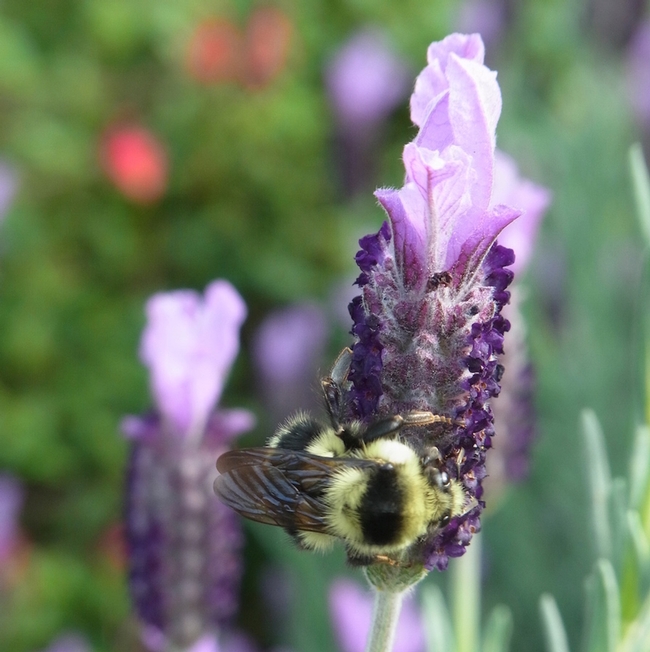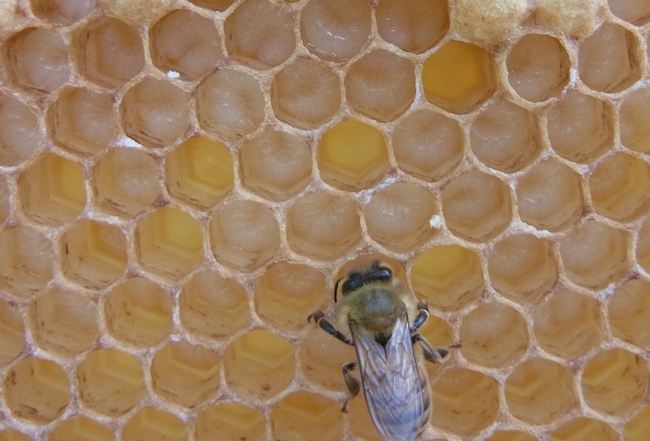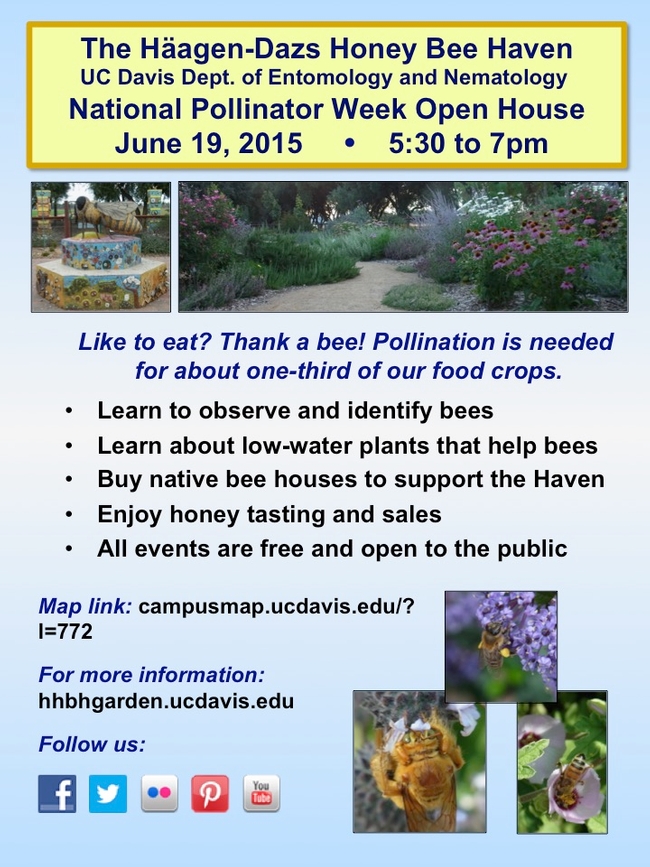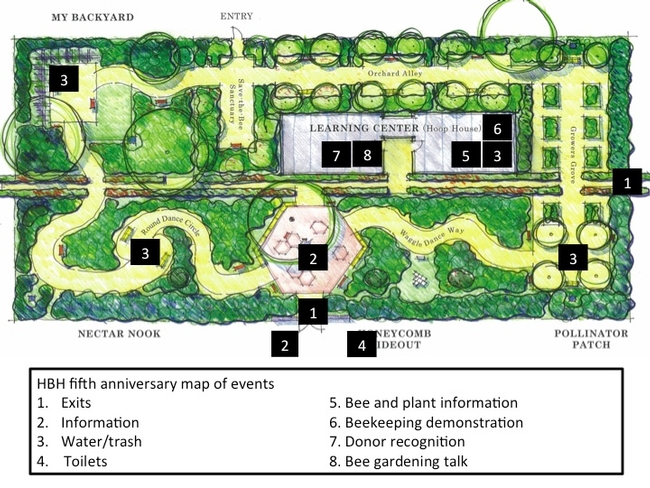- Author: Christine Casey
The garden bed to the right of the Honey Bee Haven entrance has been re-planted. As with any garden, some material had become overgrown and other plants were at the end of their productive flowering life. And remember at the Haven we're all about flowers!
The new planting emphasizes long-blooming bee favorites that will do well in full sun to light shade in much of California. With a few exceptions, this bed contains plants with a Medium or Low WUCOLS water-use rating. For the complete plant list and planting plan, including bloom times, flower color, and water use, click here.
Thanks to volunteers Cassie Bullock and Rick Williams who did much of the plant removal, planting, and mulching.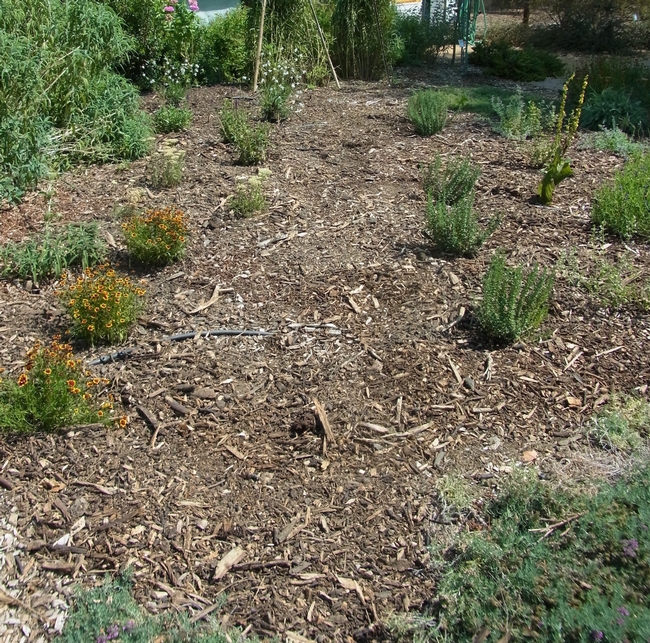
- Author: Christine Casey
Wildlife gardens, including those designed for pollinators, tend to be somewhat wild-looking. Abundant flower displays, old logs, bare soil, and wildflowers provide important habitat and food but generally have a casual look. While most bee gardeners appreciate this, there are situations when we might wish for something more formal. In the front yard, for example, personal preference or a neighborhood association may dictate a cleaner look.
The good news is that there are plenty of planting options for bee gardeners who need a more polished appearance to their garden. I've selected twelve options to provide year-round bloom; all can be seen at the Haven:
VERY LOW WATER (will survive on normal rainfall; give one to two deep soakings per summer for best appearance).
January. 'Howard McMinn' manzanita (Arctostaphylos 'Howard McMinn'). Blooms in January and February; best in full sun to light shade. UC Davis Arboretum All-Star. Clean foliage, even during drought. Grows to loosely rounded form about 6 feet tall and wide without pruning. California native.
February. 'Valley Violet' ceanothus (Ceanothus maritimus 'Valley Violet'). Blooms in February and March; best in full sun to light shade. UC Davis Arboretum All-Star. Clean foliage, even during drought. Grows to loosely mounded form about 2 feet tall without pruning; looks good in mass planting. California native.
April. California brittlebush (Encelia californica). Blooms heavily in spring and sporadically throughout the summer if deadheaded; best in full sun to light shade. Clean foliage, even during drought. Grows to loosely mounded form about 4 feet tall and wide without pruning. California native.
June. Toyon (Heteromeles arbutifolia). Blooms in late spring; full sun. UC Davis Arboretum All-Star. Clean foliage, even during drought. Grows to loosely rounded form about 6 feet tall and wide without pruning. Striking red berries in winter. California native. 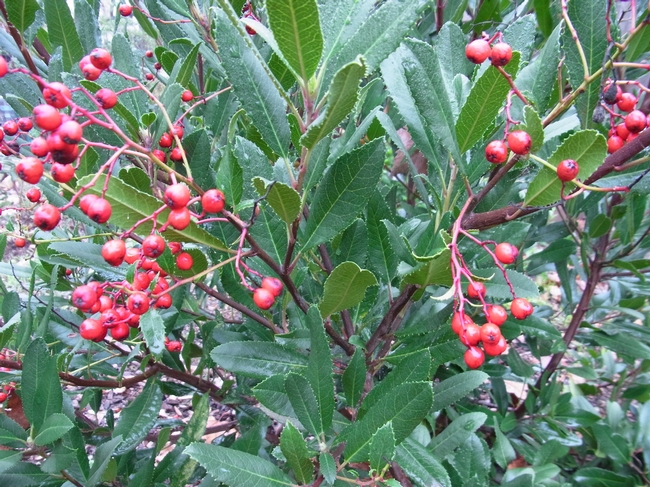
LOW WATER (water deeply every two to four weeks depending on soil and exposure)
March. Cape balsam (Bulbine frutescens). Blooms for most of the year if deadheaded; best in full sun to light shade. UC Davis Arboretum All-Star. Grows to loosely rounded form about 2 feet tall without pruning. Use in mass planting for the most formal look. 
May. Dwarf apple (Malus sp.) espalier. Full sun. Height and spread will vary with cultivar and pruning. Espalier provides a formal look.
July. Lavender (Lavandula x intermedia 'Provence'). Blooms all summer. Grows into a neat round shape about 2 feet high and 3 feet wide. Looks best massed as a low hedge.
August. Wall germander (Teucrium chamaedrys). Blooms late spring through summer. Full sun. Grows to 1 foot high and 2 foot wide mass that can be clipped into a low hedge for the most formal look. Do this after flowering to avoid removing flower buds.
September. Silverleaf (Leucopyllum langmanae 'Lynn's Legacy'). Blooms late summer. Full sun to light shade. UC Davis Arboretum All-Star. Grows to 4 feet tall by 3 feet wide. Clean blue-grey foliage provides good contrast to purple flowers.
October. Blanket flower (Gaillardia x grandiflora). Blooms for most of the year if deadheaded; best in full sun to light shade. Size depends on cultivar; grow in masses for formal look.
November. Rosemary (Rosmarinus officinalis). Blooms primarily in fall and winter. Full sun. Select an upright variety for the most formal look.
HIGH WATER (water every week)
December. Escallonia (Escallonia 'Compakta'). Blooms summer, fall, and winter. Full sun to light shade. Grows into a neat mound about 2 feet tall and 3 feet wide with clean, shiny leaves.
- Author: Christine Casey
The Haven is first and foremost a garden for bees. But like most gardens managed for bee conservation, many other insects and animals make it their home as well. One interesting and diverse group at the Haven are several species of ants native to California. Ants are in the same insect order (Hymenoptera) as bees and have similar biology to honey bees in that ant colonies also have a queen, division of labor, and care of the young.
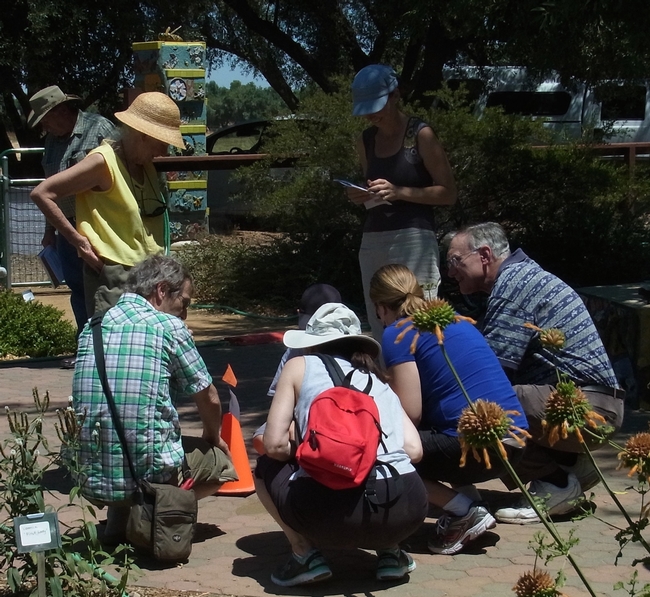
The first of these ants that garden visitors will notice is Dorymyrmex bicolor. Located in the entrance patio, the black and brown-colored ant (hence the species epithet "bicolor") is easily viewed without magnification.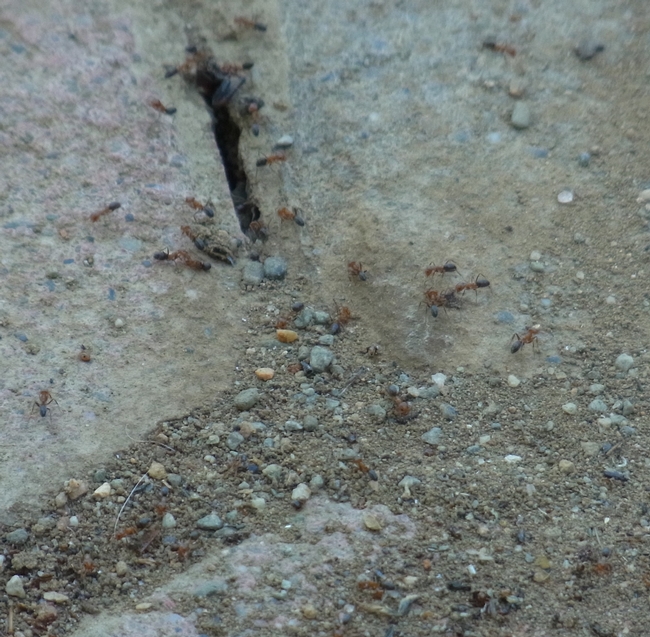
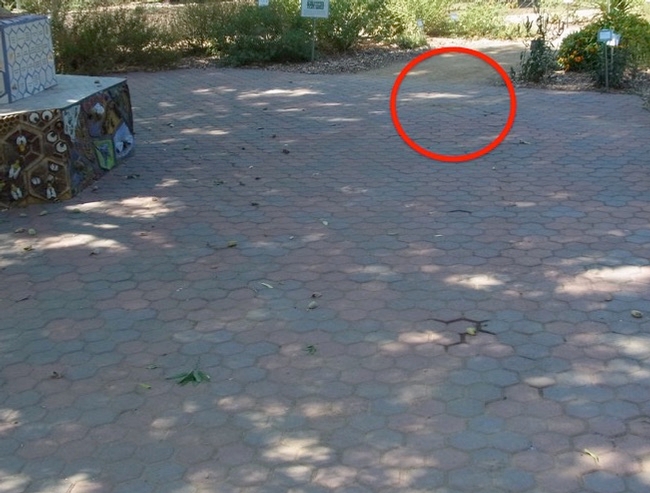
Another ant nesting in the garden's entrance patio is the odorous house ant, Taponima sessile.
A relative of D. bicolor, the ant Dorymyrmex insanus prefers dry soil. Just outside the Haven's gate, look for a crack in Bee Biology Road circled in orange paint that marks a colony entrance. A video of this ant shows the erratic movement that gives it its name.
Click here for a complete list of ants at the Haven and the UC Davis Arboretum. For more information on ants, including great photos, visit AntWeb.
- Author: Christine Casey
Like to eat? Thank a bee! Join us at the Haven on June 19 to celebrate National Pollinator Week. Our open house will take place from 5:30 to 7:00pm. Visitors will be able to:
- View an observation honey bee hive. Get a glimpse inside the hive to watch the queen lay eggs and the workers tend to the young bees and make honey.
- Observe our many bees "in action" working plants in the garden to collect pollen and nectar. Common bees seen in June include bumble bees, carpenter bees, honey bees, leafcutter bees, and sweat bees.

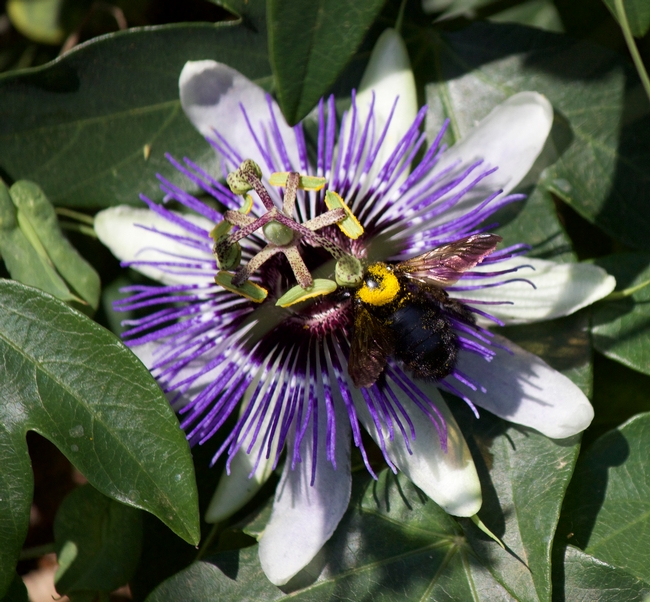

- Check out our lowest-water use bee plants to get ideas for your own water-wise bee garden.
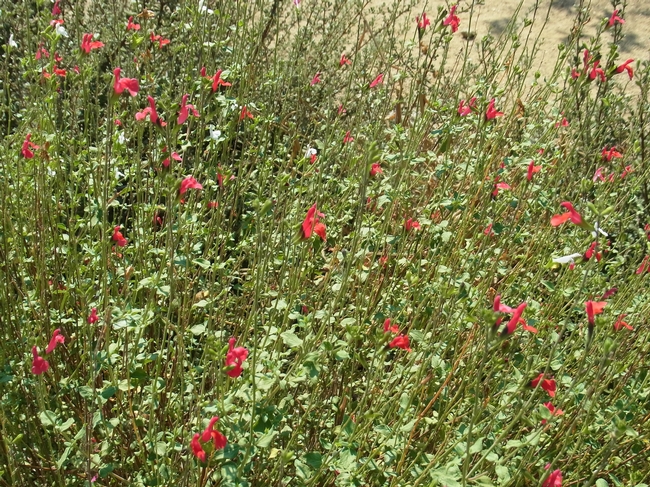
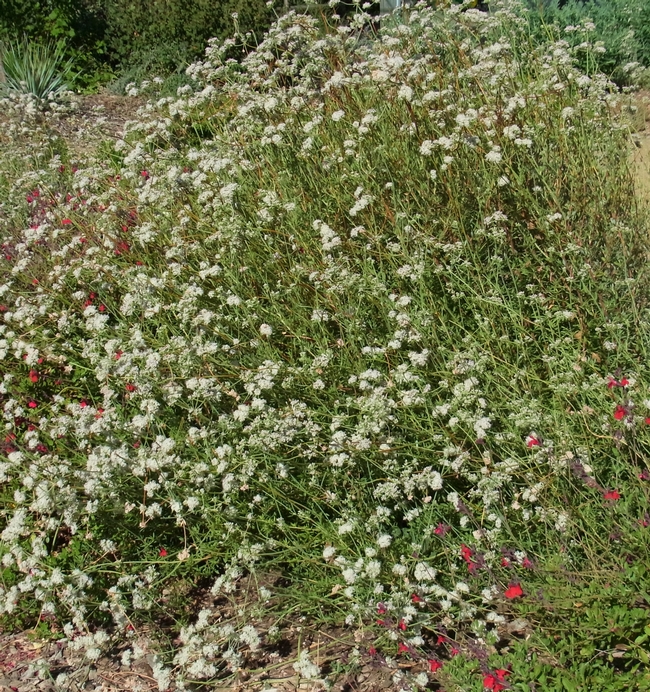
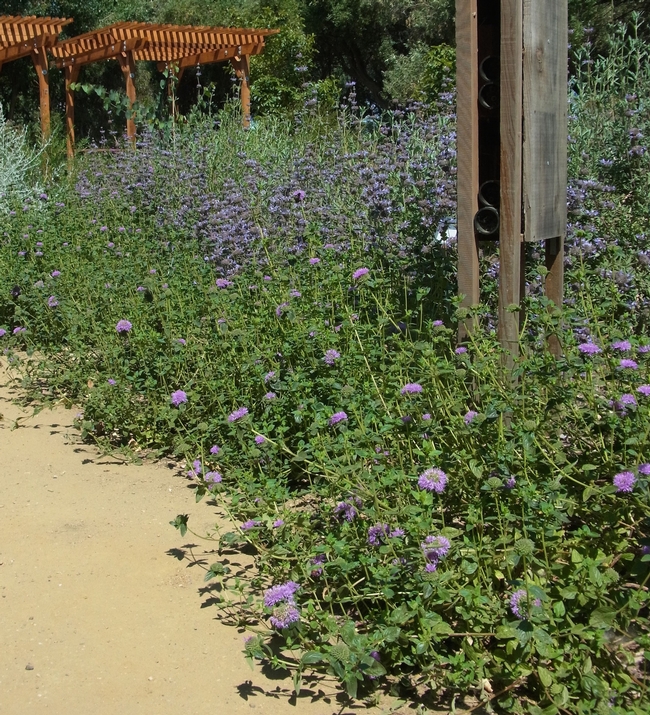
- Taste and buy honey from the Honey and Pollination Center. A portion of the proceeds support bee research at UC Davis.
- Buy native bee houses for your garden. All proceeds support the Haven.
 A painted bee nesting tube similar to the ones for sale at the open house
A painted bee nesting tube similar to the ones for sale at the open house
- Author: Christine Casey
It's almost here! Please join us in celebrating the fifth anniversary of the Honey Bee Haven this Saturday, May 2, from 10 am to 2 pm. There will be beekeeping demonstrations, information about native bee conservation and identification, and lots to learn about bee gardening. And if that weren't enough, we'll be giving out free wildflower seeds and ice cream from Häagen-Dazs. Yes, free ice cream!
We'll also have bee houses for sale, a raffle, and free one-year subscriptions (or renewals) to Better Homes and Gardens for anyone who donates $10 or more to the garden.
Here is the complete schedule, along with photos of some of the bees you might see at the Haven:
Native bee information: experts will be available from 10 to 2
Beekeeping demonstrations: 10:45; repeat @ 11:15; 11:45; 12:15; and 12:45pm
Donor and volunteer recognition: 10:30 to 11:30
Bee gardening talk: 1:00pm; repeat @ 1:30 pm
Click here for the campus map location of the Haven.

